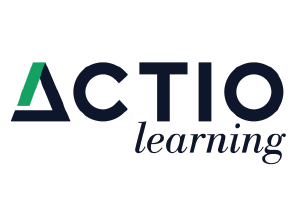As we all navigate workloads, commitments and interactions with our teammates in this time of uncertainty, how we communicate with one another has become even more important.
We have noticed a few silver linings in the COVID-19 pandemic. One is that just about every e-mail, instant message or virtual meeting begins with someone asking some heartfelt questions: “How is everyone? Are you and your families staying safe?”
What a nice change from those meetings where everyone (usually the leader of the meeting) jumps right into the agenda. Yes, empathy — and flexibility — may be two of the brightest silver linings to come out of this pandemic.
To that end, we would like to share a few tips we have seen and used in the last six months to better communicate with our subject matter experts (SMEs), many of whom are not used to working remotely. Most of the SMEs we work with are far from their training environments and, for that matter, each other. The majority of our projects depend on the expertise of our company’s lead technical trainers, our SMEs. You can easily imagine the struggle we had, beginning in March, to keep up with project deadlines — not to mention each other or the entire team.
In order to help us meet our deadlines, we knew we would have rethink our approach to communicating with all of our SMEs — to develop an approach which would ease their anxieties and also support them as they work on their projects in a most unusual working environment: their home. Here are the top three approaches we used in order to communicate more effectively with our remote SMEs:
1. Empathy
Be Supportive Rather Than Focusing Only on the Task at Hand
We switched our meetings to do more than just focus on one task. We began with seeking successes on assigned projects and asking who needed assistance. Crossing items off the agenda was not the focus any longer. Now, our SMEs seem not be in a rush; they want to spend time speaking with us and each other.
“Empathy and Humility Are an Instructional Designer’s ‘Super’ Skill Sets”
This strategy is an insights from the eLearning Guild e-book “Practical Tips for Instructional Designers Working with SMEs,” written by Pamela Hogle. When we tried this approach, even some of the SMEs who are not fond of being asked to “do more” were ready to assist us, especially as they learned of the struggles their co-workers were experiencing in their personal lives.
Frequently Remind Them of the Project’s Goals and How They Will Impact Them
We found this communication strategy effective in keeping our SMEs focused on how a given project would help them, especially pointing out the ways in which their administrative workloads would be reduced so that they could spend more time delivering their training.
2. Patience
Demonstrate How You Value Their Time and Expertise
This strategy was all on us, of course. It became apparent that spending quality time with each member of the team in our meetings, allowing them to share their expertise with one another, built their confidence in their role as SME.
Walk Them Through How to Use Any New Communication Platforms
Our company just implemented a new learning management system (LMS) and a new communication platform. Using these new technologies was challenging for our SMEs, as 90% of our training delivery is face to face. Because our meetings could only be virtual, we had to dedicate our energy to the many functions of these new platforms, usually learning them ourselves just before we had to train the SMEs.
Respect Communication Preferences
If your company relies heavily on using technology for communication, you are already aware of the best practices on sending invitations, instant messages and other electronic communication to your SMEs. But what if most of your SMEs do not have access to computers throughout the day due to the work environments like train yards and machine shops?
Our communication strategy needed to reflect our SMEs’ needs, so we always asked them what was best for them. Then, we adapted based on their schedules and preferences, with many meetings occurring on conference calls when they could not reach a computer.
3. Flexibility
Allow the SME to Schedule Meeting Times
This strategy may sound too risky, but it worked for us. Allowing SMEs to schedule some of the meeting times built ownership and responsibility. They now could not claim we were intruding on their schedules.
Ensure Meeting Agendas and Requests Are Clear and Brief
A best practice we implemented at the start of the pandemic — and really had always used in our roles — was to make every effort to be crystal clear in communications on what each meeting’s goals were. A quick glance lets them see what we wanted to cover. Leaving long-winded paragraphs out of e-mail messages is a true best practice.
Remind Them of Approaching Deadlines, and Make Email Subject Lines Meaningful
Describing the purpose of the meeting in subject lines is a simple technique, but we saw the benefits right away. We realized early on that “our” project due dates may not be seen as “their” project due dates. Our communications always contain, either in the subject line or in the name of the meeting, the project’s title and due date.
In this all-too hectic and uncertain working (and living) environment, it’s nice to remind ourselves to take the time to improve how we communicate with our colleagues, co-workers and clients. These are not easy times, nor is there an exact date for when we can return to “normal.” But, we do have the ability to enhance the ways in which we communicate with our SMEs, a real opportunity for L&D professionals to put their skills to a meaningful purpose.





